With the release of iOS 15.4, iPadOS 15.4, and macOS 12.3, Apple unleashed a ton of new features. We saw a preview of one of the most anticipated new features way back in June 2021 when it was announced at WWDC, and now it’s finally available for everyone with an iPad and Mac.
Universal Control allows you to use your Mac’s keyboard, mouse, and trackpad on your iPad or another Mac computer — up to three different devices at once. The screens aren’t shared, just the typing input and mouse cursor, so you can move the cursor’s attention to another device just by dragging it off-screen in the direction of the other device. You can even drag and drop content between devices.
- Don’t Miss: 43 Cool New iOS 15.4 Features for iPhone — App Updates, Hidden Changes, and More!
Jump to Section:Universal Control Example | Supported Devices | Universal Control vs. Sidecar | Is it Stable? | Configuring Universal Control | Using Universal Control | Universal Control Settings | Useful Keyboard Shortcuts
Example of Universal Control at Work
In my video below, I show the basics of Universal Control in action — that you can type, use your cursor, and scroll seamlessly through your iPad and Mac computer. I’m using a 2020 M1 Mac mini and a 2021 iPad Air (4th Generation), but it’ll work with many different devices, as you’ll soon see.
Supported Mac and iPad Models
Universal Control supports most newer devices. The device must be listed below and on iPadOS 15.4 or later or macOS Monterey 12.3 or later.
- MacBook Pro (2016 and later)
- MacBook (2016 and later)
- MacBook Air (2018 and later)
- iMac (2017 and later)
- iMac (5K Retina 27-inch, Late 2015)
- iMac Pro (2017)
- Mac mini (2018 and later)
- Mac Pro (2019)
- Mac Studio (2022)
- iPad Pro (all models)
- iPad Air (3rd generation and later)
- iPad (6th generation and later)
- iPad mini (5th generation and later)
It’s worth noting that Universal Control does not work between two iPads but does work between two Macs. Devices also cannot be more than 30 feet (10 meters) away from each other.
Universal Control vs. Sidecar
While both are a part of Apple’s Continuity features, Universal Control and Sidecar are two different features that potentially target different audiences.
Universal Control allows you to seamlessly use your mouse or keyboard on another device without disconnecting them first. Additionally, it lets you easily send data back and forth from each device without using AirDrop or a similar method.
Sidecar always allows you to extend or mirror the display from the Mac with an iPad. In layman’s terms, you can use your iPad as an additional display with Sidecar. However, you can also use your Apple Pencil on the iPad screen.
Is Universal Control Stable?
While Universal Control is still in beta, the feature feels pretty stable. I’ve had issues with the automatic connection feature of Universal Control, but after a few minutes, it seems to connect and work flawlessly.
Another issue I’ve had is that keyboard shortcuts and scrolling with the mouse stop working intermittently. It usually takes me having to restart my iPad to fix it.
I’ve also seen my iPad drain battery a little quicker than usual. However, that could be due to several factors, not just Universal Control.
How to Enable and Configure Universal Control
When Apple announced Universal Control at WWDC 2021, it said Universal Control was super simple to use and set up, and it wasn’t joking. Enabling Universal Control is very easy. You just need to add your device to link the keyboard and mouse. However, you need to ensure that a few settings are enabled before it works.
According to Apple, you can’t share your iPad’s cellular connection during Universal Control, and your Mac mustn’t be sharing its internet connection.
1. Connect Both Devices to the Same WiFi Network
Ensure that all of the devices you want to use with Universal Control are on the same Wi-Fi network. In my example below, both devices are connected to the Friendly Neighborhood SpiderLAN network.
- macOS: System Preferences –> Network –> Wi-Fi

- iPadOS: Settings –> Wi-Fi

2. Check Your Apple ID
All devices need to be signed in to the same Apple ID account. In the examples below, I confirmed both devices have signed into fakeemail@gadgethacks.com.
- macOS: System Preferences –> Apple ID

- iPadOS: Settings –> [Your Name]
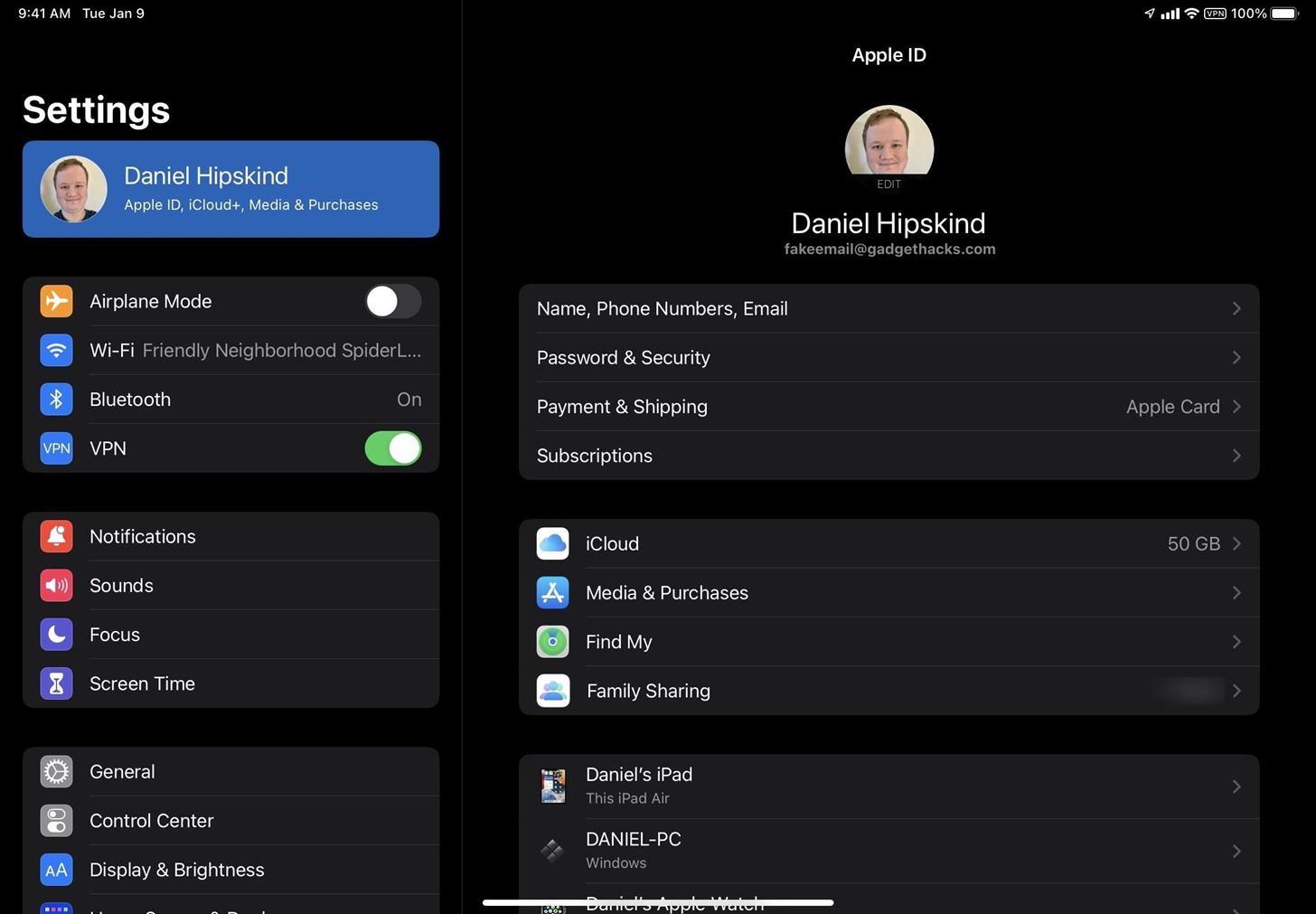
3. Ensure All Universal Control Settings Are Enabled
You must also enable Handoff on both your Mac and iPad. On your Mac, you must also turn on Universal Control.
- macOS: System Preferences –> General –> Allow Handoff between this Mac and your iCloud devices
- macOS: System Preferences –> Displays –> Universal Control –> Allow your cursor and keyboard to move between any nearby Mac or iPad
In the Universal Control settings, you should also see “Push through the edge of a display to connect a nearby Mac or iPad” and “Automatically reconnect to any nearby Mac or iPad.” Both should be on after enabling Universal Control, but if they aren’t, make sure to enable them.

To use Universal Control, you must toggle on the “Cursor and Keyboard (beta)” setting in addition to Handoff.
- iPadOS: Settings –> General –> AirPlay & Handoff

4. Add the Device as a Display
This is the step we’ve all been waiting for, where you enable Universal Control by adding the extra device to your list of displays on your Mac.
- macOS: Settings –> Displays –> Add Display –> [Your Device Name]
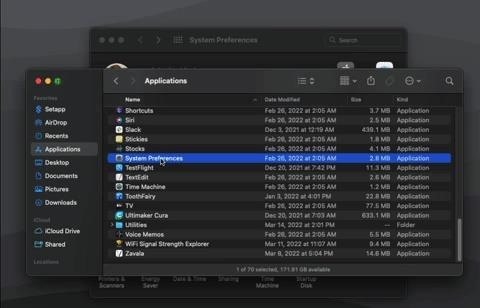
5. Change the Displays Arrangement
After you connect your device, you may want to move where you can scroll over to the device. To do so, simply click and drag where you want the device to be in regards to your other monitor(s).
- macOS: System Preferences –> Displays

How Do You Use Universal Control?
When you first move your cursor over to the iPad or second Mac, you’ll get a little resistance, and the other device will show the cursor beginning to push into focus. If you don’t go through the barrier, you won’t be controlling the other device, so break through until you see the cursor moving across the display.
Universal Control will remember the paired device, unless you disabled “Automatically reconnect to any nearby Mac or iPad,” so you shouldn’t have to push through again unless you have “Push through the edge of a display to connect a nearby Mac or iPad” disabled.
In general, you’ll just use the pointer, or your mouse, as your finger. On your iPad, you can click on anything you can tap on usually. The same goes for clicking on other Mac computers. You can also type in any text fields you could type in with a keyboard.
On an iPad, other actions are pretty similar to how you use the iPad typically but with a bit of a twist.
Get Back to the Home Screen
When you are in an app, you can click on the bottom Home Bar to go to the Home Screen. Additionally, you can continue to move your mouse downward until it closes the app, but I find that’s more work than just simply clicking on the Home Bar.


App Switcher
You can activate the App Switcher by clicking and holding on to the Home Bar while swiping up until the App Switcher pops up. If you are on the Home Screen, you can activate the App Switcher by continuing to move your mouse down in the middle of the screen.
Closing the App Switcher apps can get tricky, but it’s the same way you usually do by clicking and swiping directly up with your mouse. It may take a few times to get used to this motion.
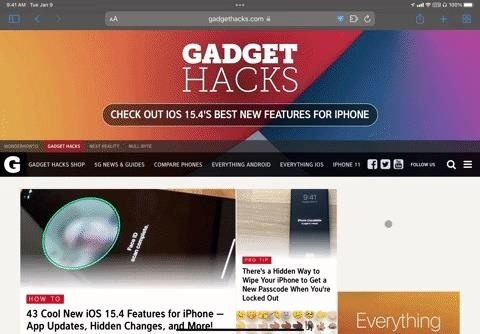
Control Center
To go to the Control Center, click on the status bar icons in the upper right-hand corner of the screen. Or you can continue to move your mouse to the upper right-hand corner of the screen.

Lock Screen
Very similar to the Control Center, to get to the Lock Screen, click on the time and date in the upper left-hand corner of the screen. To get back to where you were, click on the Home Bar or continue to scroll down towards the middle of the screen.

The Settings of Universal Control
You may want to make sure you have a few settings on to ensure it works properly and the way you want. Apple doesn’t give too many customizable options, but they’re just enough to provide a seamless experience.
- macOS: System Preferences –> Displays –> Universal Control…

- iPadOS: Settings –> Accessibility –> Pointer Control
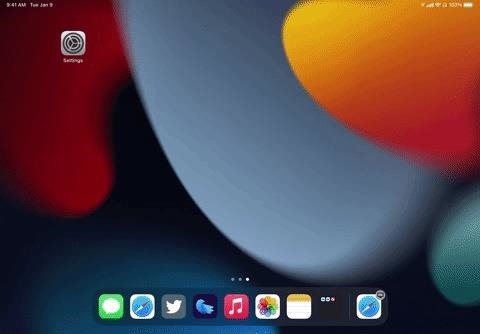
Useful Keyboard Shortcuts
If you’re like me, you find yourself using a lot of different keyboard shortcuts to take control of your workflow. There are a lot of different keyboard shortcuts you can use to help you use Universal Control.
You can bring up some keyboard shortcuts by holding Command, but most of these shortcuts do not work. However, most of the keys shown by holding the Function key, or Globe key, do work. Additionally, there are more keyboard shortcuts on the Help screen that comes up with Tab-H.
- Tab-H: Help screen (shows some keyboard shortcuts)
- Command-Hor Function-H: Home
- Command-Tab: Switch Apps
- Command-Space bar: Spotlight Search
- Command-[Arrow keys]: Switch pages on Home Screen
- Function-A: Show Dock
- Function-S: Siri
- Function-C: Control Center
- Function-N Notification Center
If you would like to change some of these shortcuts to something that suits you more, you can; Simply go to Settings –> Accessibility –> Keyboards –> Full Keyboard Access –> Commands. You can even add keyboard shortcuts for Apple Shortcuts, gestures, and even device functions, such as restarting your device.
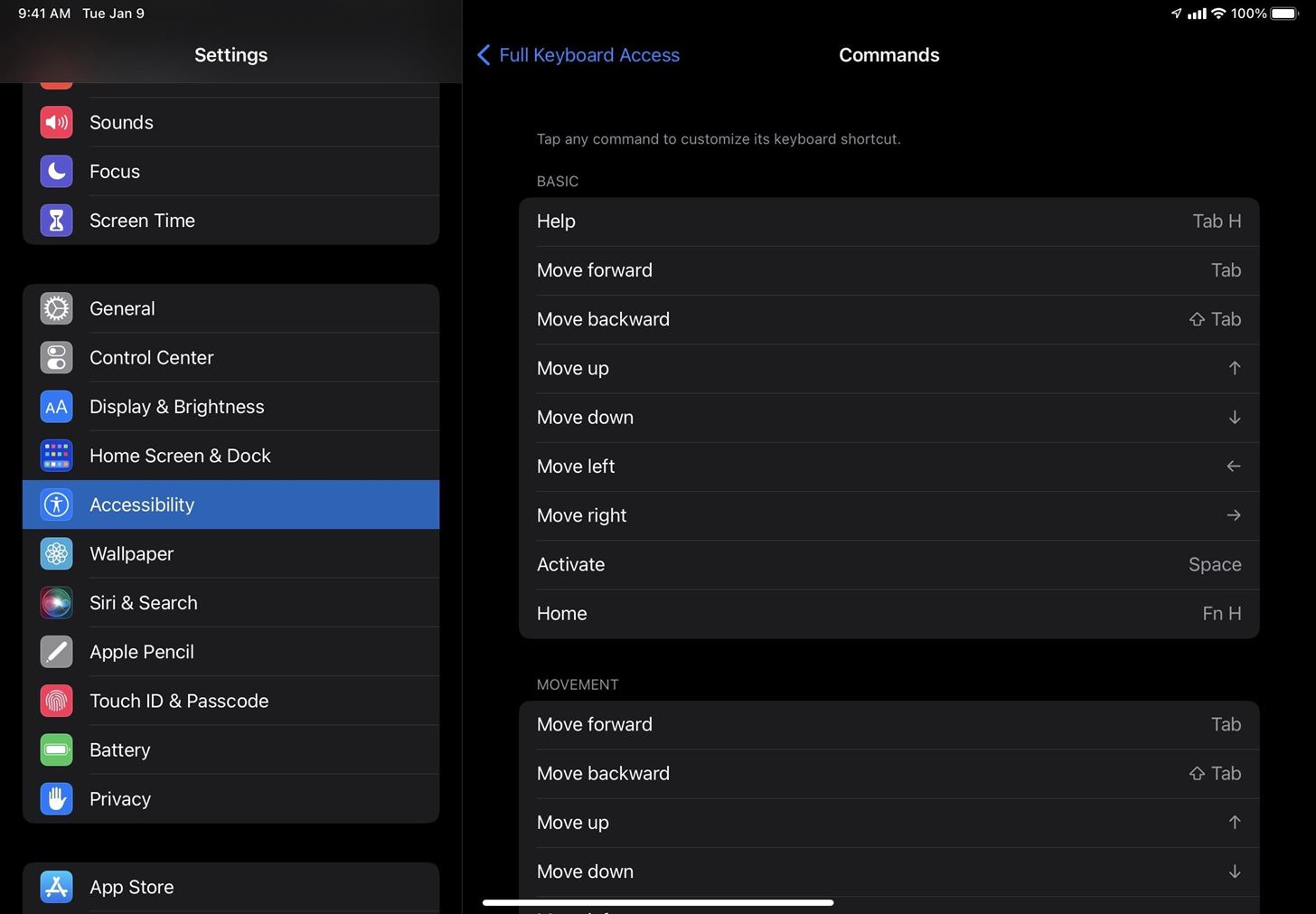
Just updated your iPhone? You’ll find new emoji, enhanced security, podcast transcripts, Apple Cash virtual numbers, and other useful features. There are even new additions hidden within Safari. Find out what’s new and changed on your iPhone with the iOS 17.4 update.
“Hey there, just a heads-up: We’re part of the Amazon affiliate program, so when you buy through links on our site, we may earn a small commission. But don’t worry, it doesn’t cost you anything extra and helps us keep the lights on. Thanks for your support!”









